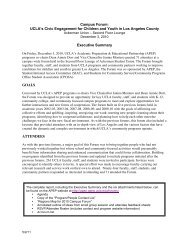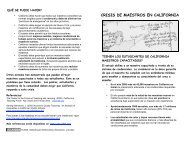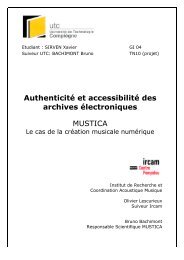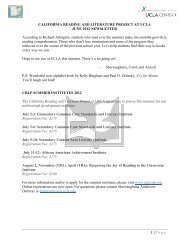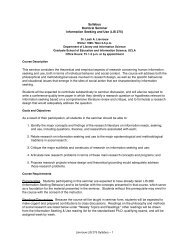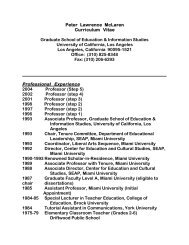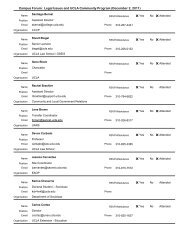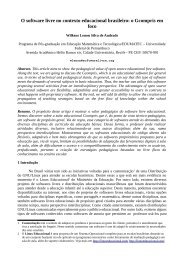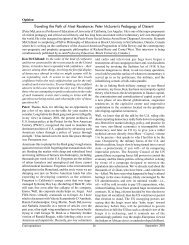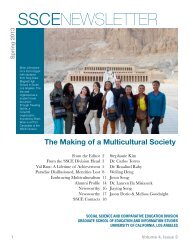1.1 From Digital Humanities to Speculative Computing - UCLA ...
1.1 From Digital Humanities to Speculative Computing - UCLA ...
1.1 From Digital Humanities to Speculative Computing - UCLA ...
Create successful ePaper yourself
Turn your PDF publications into a flip-book with our unique Google optimized e-Paper software.
While every model embodies interpretative attitudes expressed as formal<br />
structures, many information structures have graphical analogies, and can be unders<strong>to</strong>od<br />
as diagrams that organize the relations of elements within the whole. A tree structure<br />
with its vocabulary of parent-child relationships, for instance, is set up with very distinct<br />
assumptions about hierarchy. Matrices, lattices, one-<strong>to</strong>-many and one-<strong>to</strong>-one<br />
relationships, the ability <strong>to</strong> “cross walk” information from one structure <strong>to</strong> another, <strong>to</strong><br />
disseminate it with various functionalities for use by broadly varied communities, or <strong>to</strong><br />
restrict its forms so that it forces a community <strong>to</strong> think differently about the information –<br />
these are all potent features of information architecture.<br />
All of this work, whether it is the design of a string search or the graphical<br />
presentation of a statistical pattern, the creation of a set of metadata fields, tags, or the<br />
hierarchical or flat structure of architecture for data, is modeling. It is all an expression of<br />
form that embodies a generalized idea of the knowledge it is presenting. The model is<br />
abstract, schematic, ideological and his<strong>to</strong>rical through and through, as well as discipline-<br />
bound and highly specific in its form and constraints. It is also, often, invisible. An<br />
alphabetical ordering is a model. So is a tree structure or a grid. All have their origins in<br />
specific fields and cultural locations. All carry those origins with them as an encoded set<br />
of relations that structure the knowledge in the model. Model and knowledge<br />
representation are not the same, but the morphology of the model is semantic, not just<br />
syntactic. On the surface, a model seems static. In reality, like any “form” it is a<br />
provocation for a reading, an intervention, an interpretive act <strong>to</strong> which it gives rise—<br />
these statements are the core tenets of SpecLab’s work.<br />
<strong>1.1</strong> His<strong>to</strong>ry / 3/2008 /<br />
40





